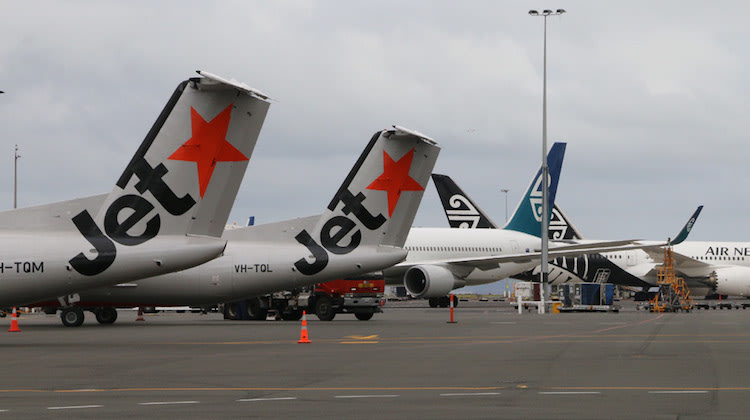
Lower oil prices have helped fuel demand for air travel at the start of what is shaping up as a bumper year for the aviation industry in 2016 despite some economic weakness across parts of the globe, new figures suggest.
The International Air Transport Association (IATA) says the airlines experienced a 7.1 per cent increase in demand, measured by revenue passenger kilometres (RPK), in January 2016, compared with the prior corresponding period, while capacity, or available seat kilometres (ASK), rose 5.6 per cent in the month.
As a result, load factors climbed 1.1 percentage points to 78.8 per cent, the highest ever January figure in the monthly IATA survey published on Tuesday (European time).
“All told, underlying conditions continue to point to another strong year of growth for passenger traffic,” the IATA report said.
“While the global economy continues to face downside risks, another year of modest economic growth will not present a major headwind.
“Moreover, although the downward trend in global air fares eased towards the end of 2015, the additional decline in oil prices seen during the final months of last year and into January is likely to provide further stimulus for air travel growth during the course of 2016.”
In December, IATA forecast airlines around the world would collectively generate US$36.3 billion in profits and return their cost of capital in 2016, amid strong demand for passenger travel, lower fuel prices and operational improvements.
The 2016 forecast represented a net profit margin of 5.1 per cent and an increase from the US$33.1 billion profit airlines were tipped expected to post for 2015.
On a regional basis, Asia Pacific airlines represented the largest share of global air passenger traffic with 31.5 per cent, followed by Europe (26.7 per cent) and North America (24.7 per cent). Operators in the Middle East, led by the fast growing trio of Emirates, Etihad and Qatar, carried a 9.4 per cent of world air travel.
African carriers posted the strongest lift in demand, with RPKs up 11 per cent in January, well ahead of capacity growth of 7.1 per cent.
Meanwhile, the Middle East had the largest increase in capacity, with ASKs up 12.8 per cent in the month.
“January maintained the strong traffic growth trend seen in 2015, showing the resilience of demand for connectivity despite recent turmoil in equity markets,” IATA chief executive Tony Tyler said in a statement.
“The record load factor is a result of strong demand for our product and airlines making the most productive use of their assets.
“Underlying conditions point to another strong year for passenger traffic, with the latest decline in oil prices likely providing additional stimulus for air travel growth.”
In terms of domestic air travel, IATA figures showed Australian carriers grew ASKs 2.3 per cent in January, compared with the prior corresponding period, while RPKs were up a healthy 3.8 per cent. As a result, load factors rose 1.1 percentage points to 76.9 per cent.
Those modest figures in the Australian domestic market are in contrast to the booming Indian market, where ASKs jumped 21.9 per cent and RPKs were 22.9 per cent higher in January. And with demand outpacing capacity growth, load factors on Indian domestic flights rose to 84.7 per cent in January, from 84 per cent in the prior corresponding period.
While China also recorded double-digit increases in capacity and demand, the growth rates were about half that of India.
“Growth in India is being propelled by the comparatively strong economic backdrop – India overtook China as the fastest growing major economy in the world in 2015 – and increases in services,” IATA said.
“Meanwhile, although shifts in the timing of Chinese New Year can complicate analysis at this time of year, the upward trend in domestic China traffic remains strong. Overall economic growth in China may have slowed, but business confidence indicators continue to show the services side of the economy is holding up better.”















